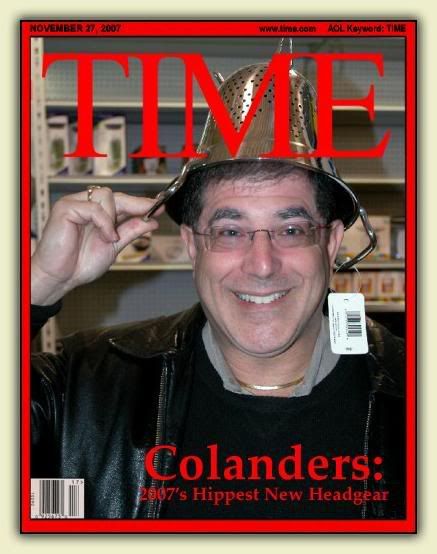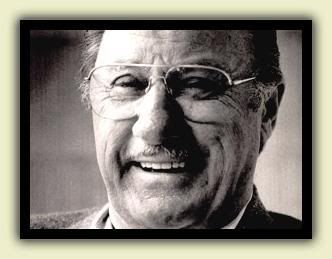I’ve written on the topic of Invented Languages before: on Klingon and Esperanto; and, more recently, on Klingon and Yiddish.
The latter post was inspired by Eric, the Straight White Guy, who was struck by what he perceived to be apparent similarities between Yiddish and Klingon. [I know where Eric found the Yiddish; I’m almost afraid to ask where he came by his knowledge of Klingon.]
Given that Dr. Marc Okrand, the creator of the Klingon language (tlhlngan Hol), is Jewish (according to commenter Qov, who should know), I suspect that some of the sounds shared in common between Hebrew, Yiddish, and Klingon are not entirely the result of coincidence.
But here’s where things get interesting. Just for shits ’n’ grins, I did a Google search on yiddish klingon. My recent post popped up #1, but the third listing caught my eye: a MySpace forum entry by one David, who uses the moniker This is My BOOMSTICK! And it turns out that David is a native Alaskan who teaches Tlingit...
...and who has found that a good way to introduce the sounds of Tlingit to non-Tlingit speakers is to teach them Klingon first.
Wait. It gets even more surreal.
If you follow the thread, you see that David is not only learning Esperanto - another invented language - but he’s monitoring the growing influx of loanwords into Tlingit...from Yiddish (!) and Klingon (!!!). Quoth David,
Take the Klingon away, and you have three languages that figure prominently in Michael Chabon’s fascinating alternative history novel, The Yiddish Policemen’s Union, which takes place in present-day Sitka, Alaska...in a world in which the Jewish homeland was created on leased land in Alaska after World War II. It’s a world in which Yiddish, not Hebrew, becomes the official language of the Alaskan Jews. And it shouldn’t be a surprise that one of the prominent characters in the book - the protagonist’s partner, one Berko Shemets - is half-Tlingit, or that the book’s central murder mystery is centered around the Zamenhof Hotel, named after the creator of Esperanto.
So: Learn Klingon (an artificial language created by a Jewish linguist) so you can learn Tlingit. Then, go read a book that incorporates elements of Yiddish, Tlingit, and Esperanto (another artificial language created by a Jewish linguist).
I’d love to hear David’s impression of The Yiddish Policeman’s Union. I truly would.
The latter post was inspired by Eric, the Straight White Guy, who was struck by what he perceived to be apparent similarities between Yiddish and Klingon. [I know where Eric found the Yiddish; I’m almost afraid to ask where he came by his knowledge of Klingon.]
Given that Dr. Marc Okrand, the creator of the Klingon language (tlhlngan Hol), is Jewish (according to commenter Qov, who should know), I suspect that some of the sounds shared in common between Hebrew, Yiddish, and Klingon are not entirely the result of coincidence.
But here’s where things get interesting. Just for shits ’n’ grins, I did a Google search on yiddish klingon. My recent post popped up #1, but the third listing caught my eye: a MySpace forum entry by one David, who uses the moniker This is My BOOMSTICK! And it turns out that David is a native Alaskan who teaches Tlingit...
...and who has found that a good way to introduce the sounds of Tlingit to non-Tlingit speakers is to teach them Klingon first.
Tlingit is rather gutteral (sic) and some of the sounds of Klingon actually parallel some of the sounds in Tlingit.Just Damn!
Wait. It gets even more surreal.
If you follow the thread, you see that David is not only learning Esperanto - another invented language - but he’s monitoring the growing influx of loanwords into Tlingit...from Yiddish (!) and Klingon (!!!). Quoth David,
I’m keeping notes on current usage in Tlingit and am surprised by how much Klingon and Yiddish have made their way into Tlingit. I’ve counted over 250 words in total from Yiddish and Klingon. [emphasis mine]OK, we now have the confluence of four languages - Tlingit, Yiddish, Klingon, and Esperanto - two of which are naturally-developed languages spoken by relatively few people, and the other two of which are invented languages spoken (also) by relatively few people.
Take the Klingon away, and you have three languages that figure prominently in Michael Chabon’s fascinating alternative history novel, The Yiddish Policemen’s Union, which takes place in present-day Sitka, Alaska...in a world in which the Jewish homeland was created on leased land in Alaska after World War II. It’s a world in which Yiddish, not Hebrew, becomes the official language of the Alaskan Jews. And it shouldn’t be a surprise that one of the prominent characters in the book - the protagonist’s partner, one Berko Shemets - is half-Tlingit, or that the book’s central murder mystery is centered around the Zamenhof Hotel, named after the creator of Esperanto.
So: Learn Klingon (an artificial language created by a Jewish linguist) so you can learn Tlingit. Then, go read a book that incorporates elements of Yiddish, Tlingit, and Esperanto (another artificial language created by a Jewish linguist).
I’d love to hear David’s impression of The Yiddish Policeman’s Union. I truly would.
























































